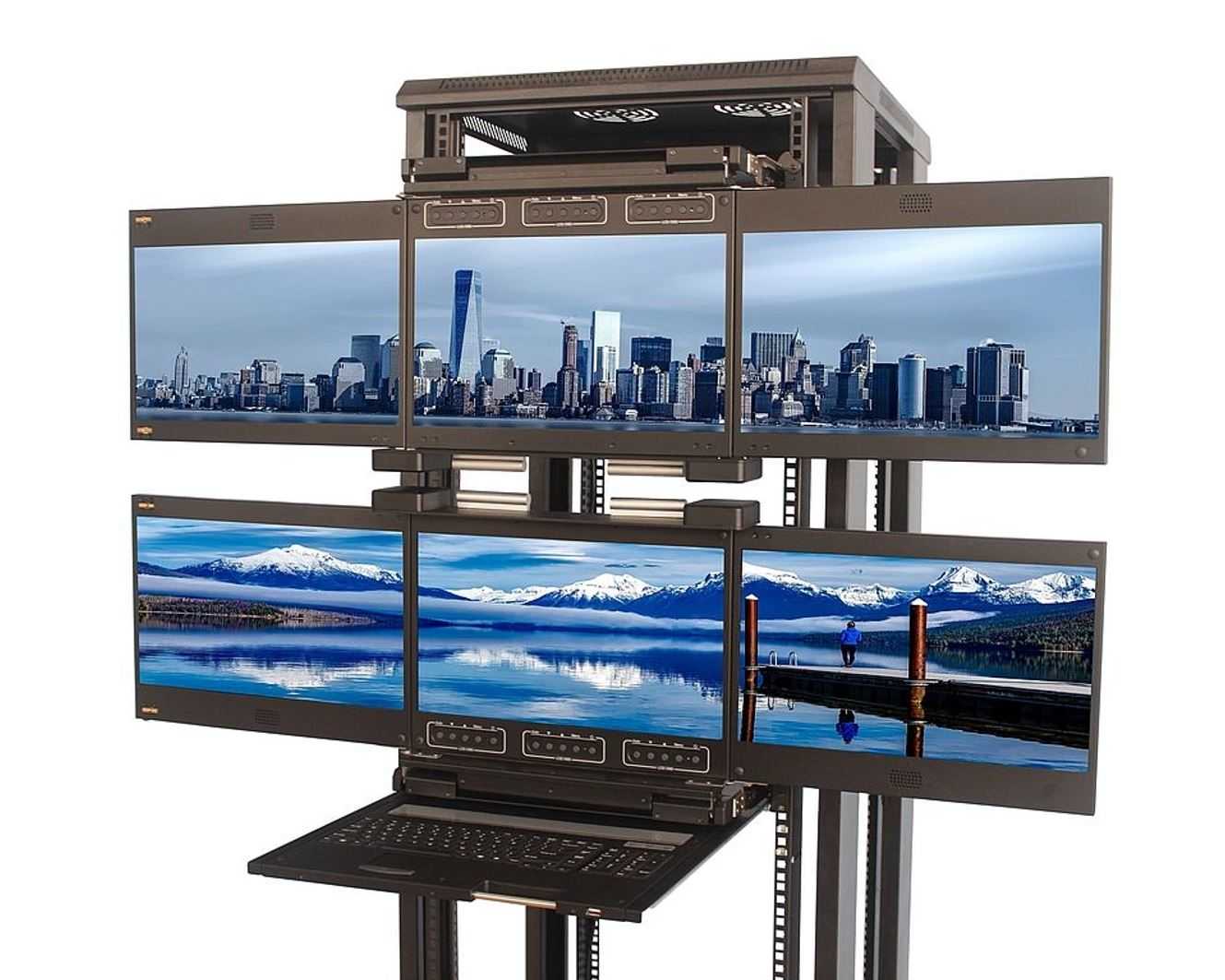Rack mounted infrastructure for critical industrial, government and military applications requires very long operational lifespans and high MTBF (Mean Time Between Failures) for minimizing costly downtime.
1U rackmount LCD monitors designed for these applications incorporate ruggedized components, redundant subsystems and stringent design margins to ensure extended field reliability. In this article, we examine various reliability-enhancing measures implemented in premium rack mount displays.
Ruggedized LCD Panels
The LCD panel forms the heart of a rack mount monitor, and panel longevity is key. Industrial-grade LCD panels designed for 24/7 operation are used to create ruggedized 1U rack displays:
- Ruggedized panels use LED backlights providing up to 70,000 hours backlight half-life with advanced thermal design to prevent burnout.
- Fault-tolerant circuits within LCD panels prevent failures from compromising full display functionality.
- Superior optical bonding using industrial adhesives instead of regular lamination increases display rigidity and lifespan.
- Wide operation temperature ranges from -20°C to 55°C supported along with fanless cooling enabling rugged environmental tolerance.
- Panel surfaces are treated with anti-reflective, anti-glare and EMI filtering coatings. An additional protective cover glass provides resistance from minor scratches during use.
In-built monitoring capabilities detect potential faults early for preventive maintenance before outright failures.
High-endurance LCD panels engineered to military specifications result in rack mount monitors capable of many years of continual operation.
Over-engineering For Lower Thermal Stress
Rack displays designed for long use must manage the thermal stress that occurs at component level over time:
Critical circuits are designed with wide thermal headroom so components operate well below their maximum temperature ratings. This prevents long term thermal degradation.
Similarly, electrical loads like backlights are driven at levels far below their rated power using pulse-width modulation and active limiting. This reduces heat generation and improves lifespan.
Generous use of heat sinks, heat pipes and conduction channels dissipates heat efficiently from internal assemblies keeping components cool. Custom heat sink profiles ensure no localized hot spots develop.
Conformal coatings applied on PCBAs provide insulation and prevent environment factors like moisture and particulates from affecting components over time.
Keeping all components, backlights and boards running cooler reduces gradual damage from years of accumulated thermal cycling.
Highly Reliable Components
Long field operation mandates using the highest reliability parts and matrices in rackmount displays:
Premium-grade electronic components are used instead of consumer/industrial variants for critical subcircuits and power delivery. These support 50,000 to 100,000 hours MTBF.
Only field-proven component families and manufacturing processes are used instead of cutting-edge releases that lack extensive reliability data. Stability is prioritized over peak specifications.
Components are derated by at least 30% below their ratings to keep them well within safe operating margins.
Suppliers are carefully selected based on statistical reliability and quality metrics. Each production lot undergoes additional testing over standard sampling.
Components prone to wear like fans and mechanical buttons are eliminated through fanless convection cooling and touch interfaces.
Minimizing points of failure via rigorous component selection results in highly dependable 1U displays.
Full Redundancy For Critical Subsystems
Implementing full redundancy for pivotal internal subsystems minimizes downtime from failures:
- Dual power supply units run in active parallel redundancy so displays operate seamlessly in case of single power supply failure.
- Displays incorporate dual graphics processors in active/standby redundancy for uninterrupted operation even if the main GPU fails.
- Critical control and monitoring microcontrollers are implemented redundantly and run in lockstep for fault tolerance against controller failures.
- Data and power buses are routed fully redundantly with fail-safe mechanisms to isolate failed channels.
- Parallel NVMe SSDs in RAID-1 configuration offer continued access to critical system and video data despite a storage drive failure.
Redundant hot swappable modules streamline replacing failed components without powering down displays during mission-critical monitoring.
Stringent Vibration Testing Standards
Rack-based operation combined with vehicular and mobile defense applications necessitate stringent vibration resilience:
1U rack displays designed for MIL-STD and DO-160 undergo brutal vibration testing spanning large amplitudes, wide frequency ranges and prolonged stress durations far beyond commercial testing levels.
Critical solder joints are reinforced with polymeric epoxy fillers beyond conventional conformal coatings to withstand high vibrational forces over years of operation.
Shock damping materials placed strategically around key components absorb transient shock impulses preventing propagated damage.
Effective clamping, stiffening and strain relief mechanisms prevent issues like loosened connectors that degrade reliability over long-term vibration exposure.
Ruggedized proprietary video processing algorithms compensate for temporary motion-induced video artifacts.
Hardened designs that withstand extreme vibration profiles ensure extended 1U monitor reliability in mobile defense deployments.
Conclusion
With their dense concentric form factors and cost pressures, rackmount environments demand displays engineered for maximum longevity and minimal downtime.
By implementing hardened LCD panels, over-engineered thermal design, ultra-reliable components, redundancy and stringent testing, 1U rack monitors meet the durability requirements of critical 24/7 rack applications across military, industrial and high-reliability settings.
Carefully balancing performance specifications, ruggedness and mission-critical reliability enables modern 1U displays to provide many years of dependable continuous operation within dense rack deployments.










